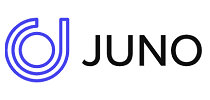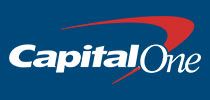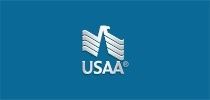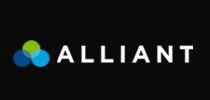If you’re tired of paying for your checking account, we’re right there with you. While service fees and monthly charges are justified for some bank accounts, they’re just not worth it for a lot of people – especially because more fees don’t always translate to better products. In fact, some of the best checking accounts are free.
Finding the perfect place for your money is about knowing what you’re looking for, understanding your banking habits, and getting your priorities straight. It’s not about how much money you spend per month.
Here are eight of the best free checking accounts for those who were ready to start banking without fees yesterday.
What’s Ahead:
- Best online checking account: Chime® Checking Account
- Best for saving: Ally Interest Checking Account
- Best for crypto and high balances: Juno® Checking Account
- Best for cash back: LendingClub Rewards Checking
- Best for cash deposits and in-person banking: Capital One 360 Checking Account
- Best for military members: USAA Classic Checking Account
- Best for teens: Alliant Teen Checking Account
- Best for cash access: FNBO Direct Online Checking Account
- How to choose a checking account
- Types of checking accounts
- How to open a free checking account
- FAQs
- Summary
Best online checking account: Chime® Checking Account
Pros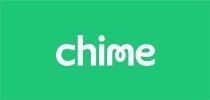
- No minimum balance requirement
- No minimum opening deposit requirement
Cons
- Does not pay interest
Features
- APY: N/A
- Early direct deposit3
- Fee-free overdraft5
- Automated savings features1
- 60,000+ fee-free ATMs6
Chime®* is one of the best free checking accounts across the board with benefits including early direct deposit3, a mobile app that’s as comprehensive as it is simple to use, and great accessibility. The Chime Online Checking Account is an especially good option for people looking for easy transfers from their checking to their savings account.
Chime is an online-only financial technology company known for fewer fees and more flexibility than traditional banks. There’s no opening deposit or minimum balance required for this account, and you’ll do everything completely online. You can use the Chime Visa® Debit Card* anywhere, including at more than 60,000 free ATMs6.
Get your paycheck up to 2 days early with direct deposit3 and fee-free overdraft for up to $200 with Chime Spot Me®5 for eligible members are two benefits of banking with Chime that can make your life a little easier. But one of the best parts of Chime is the app, which receives excellent reviews across the board and sets the standard for mobile banking.
After opening a Chime Checking Account, we recommend opening a High Yield Chime Savings Account too. A Chime Checking Account is required to be eligible for a Savings Account. Then you can have your debit card purchases and bill payments rounded up to the nearest dollar and the extra sent to your savings with Round Ups^. You can also save a portion of your paycheck or direct deposit each time it hits1. This is a foolproof strategy that doesn’t require willpower or remembering to make a transfer every week or two.
Learn more or read our full review.
* Chime is a financial technology company, not a bank. Banking services and debit card provided by The Bancorp Bank, N.A. or Stride Bank, N.A.; Members FDIC.
^ Round Ups automatically round up debit card purchases to the nearest dollar and transfer the round up from your Chime Checking Account to your savings account.
1 Save When I Get Paid automatically transfers 10% of your direct deposits of $500 or more from your Checking Account into your savings account.
3 Early access to direct deposit funds depends on the timing of the submission of the payment file from the payer. We generally make these funds available on the day the payment file is received, which may be up to 2 days earlier than the scheduled payment date.
5 Chime SpotMe is an optional, no fee service that requires a single deposit of $200 or more in qualifying direct deposits to the Chime Checking Account each month. All qualifying members will be allowed to overdraw their account up to $20 on debit card purchases and cash withdrawals initially, but may be later eligible for a higher limit of up to $200 or more based on member's Chime Account history, direct deposit frequency and amount, spending activity and other risk-based factors. Your limit will be displayed to you within the Chime mobile app. You will receive notice of any changes to your limit. Your limit may change at any time, at Chime's discretion. Although there are no overdraft fees, there may be out-of-network or third party fees associated with ATM transactions. SpotMe won't cover non-debit card transactions, including ACH transfers, Pay Anyone transfers, or Chime Checkbook transactions. See Terms and Conditions.
6 Out-of-network ATM withdrawal fees may apply except at MoneyPass ATMs in a 7-Eleven, or any Allpoint or Visa Plus Alliance ATM.
Best for saving: Ally Interest Checking Account
Pros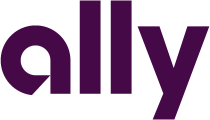
- No minimum balance requirement
- No minimum opening deposit requirement
Cons
- No cash deposits
Features
- APY: 0.10% – 0.25%
- Early direct deposit
- Fee-free overdraft
- 43,000+ fee-free ATMs
- Automated savings features
Ally Bank is another online bank with a lot to offer in the checking department. The Ally Interest Checking Account is an all-around solid bank account that pays up to 0.25% on balances and helps account holders save with automated savings features, interest, and more.
This free checking account charges no fees for service and maintenance and also waives fees for most account activities such as overdrafts, ACH transfers, and bill payments. A few things you can be charged for are outgoing wires, foreign transactions, and expedited delivery of payments or products.
If you’re looking for a checking account to help you save more, the Ally Interest Checking can help you meet your goals and start developing good habits. It lets you easily contribute to your savings with a checking feature called Round Ups. With Round Ups, every time you use your debit card to make a purchase, Ally will automatically round up your transaction to the nearest dollar and move the extra to your savings account. This is similar to Chime’s program but Ally’s savings interest rate is better.
To use this feature, you’ll need to open an Ally Online Savings Account as well, but don’t think of this as a downside. This savings account always pays a very competitive interest rate and includes more automated savings features like Surprise Savings, which helps you find money in your budget that’s free to save.
Learn more or read our full review.
Best for crypto and high balances: Juno® Checking Account
Pros
- No minimum balance requirement
- No minimum opening deposit requirement
Cons
- Direct qualifying deposit requirement of $250 or more per month for Metal Checking membership
- High minimum balance requirement for annual bonus
Features
- APY: up to 5%
- Crypto rewards
- Annual account bonuses
- Cash back on debit card purchases
- 85,000+ fee-free ATMs
Juno may be the best bank for you if you’re looking for a tech-forward account with investing benefits. This unique checking account is ideal for crypto investors who intend to link their direct deposit and plan to keep a high balance of at least $10,000.
The Juno Checking Account is nontraditional in a lot of ways. Not only does it let you invest crypto, but it also earns a competitive rewards rate on your debit card spending. You can get 5% cash back at select merchants like Amazon, Uber, and Starbucks when you use cash or crypto for purchases. Cash back rewards are capped at $25 a year for Basic Users, or up to $500 in purchases, and $300 for Metal Users, or up to $6,000 in purchases.
You’ll also get Juno coins – a loyalty token that can be redeemed for cash back, gift cards, or promotional offers – at a 1:1 rate when you receive direct deposits and spend with your card.
The Juno Checking Account is investor-friendly above all. You can use it to buy and sell cryptocurrencies and even automatically invest a portion of your paycheck. And the higher your balance, the more you’ll get from this account. You’ll earn a 5% annualized bonus on the first $10,000 deposited and a 3% annualized bonus after that on balances beyond $10,000 up to $250,000. For this reason, Juno is best for people who plan to deposit a lot of money. Terms apply.
Learn more or read our full review.
The Juno Checking Account and Debit Card are part of an offering of CAPITLJ Inc ("Juno") and Evolve Bank and Trust, Member FDIC. The deposits at each Bank are eligible for insurance by the Federal Deposit Insurance Corporation (FDIC) up to $250,000, subject to FDIC rules on aggregation of deposits held in the same insurable capacity. Please visit the FDIC website. Neither Juno by CAPITALJ Inc. nor any of its subsidiaries is a Bank.
Best for cash back: LendingClub Rewards Checking
Pros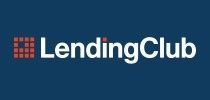
- No minimum balance requirement (to avoid fees)
Cons
- $100 minimum opening deposit requirement
- $2,500 balance required to earn interest
- Direct deposit or balance requirements to earn cash back
Features
- APY: 0.10% – 0.15%
- Early direct deposit
- Unlimited ATM rebates
- 37,000+ fee-free ATMs
LendingClub, also an online bank, offers one of the most enticing free checking accounts out there that pays both interest and cash back. With the LendingClub Rewards Checking Account, you can earn unlimited 1% cash back on debit card purchases. This account also earns interest to the tune of 0.10% APY on balances between $2,500 and $99,999.99 and 0.15% if your balance hits or exceeds $100,000.
For cash back, there are two catches. The first is that you need to meet one of these two requirements:
- Maintain an average daily balance of $2,500
- Receive at least $2,500 in monthly direct deposits
Also, you won’t earn cash back for the first 30 days you have your account. The second stipulation is that the purchases you make must be signature-based to earn cash back. These are purchases charged as credit instead of debit that require you to sign to authorize. If you make a regular PIN-based purchase, it won’t count.
With LendingClub, you have easy access to your funds at all times. Not only can you use the mobile banking app, but you can use any ATM to deposit checks or withdraw funds. LendingClub Bank rebates any fees you pay, including those charged by the banks that own the ATMs you use. And customer support is available seven days a week.
Unlike many free checking accounts with no minimums, the LendingClub Rewards Checking Account has a deposit requirement and a minimum balance that you need to maintain to earn interest. Because of this, it won’t be a good fit for everybody.
Learn more or read our full review.
Best for cash deposits and in-person banking: Capital One 360 Checking Account
Pros
- No minimum balance requirement
- No minimum opening deposit requirement
Cons
- Low interest rate
Features
- APY: 0.10%
- Early direct deposit
- Overdraft protection
- 70,000+ fee-free ATMs
Many free checking accounts and checking accounts in general don’t allow cash deposits at all or have very few locations where this is allowed. The Capital One 360 Checking Account lets you deposit cash at any CVS location. So whether you’re a teen looking for a place to keep babysitting money or a server with tips to deposit, it’s easy to add cash to your balance.
But that’s far from the only thing to like about this product. This account also offers a few options for fee-free overdrafts and the option to get paid up to two days early when you set up direct deposit. The three different types of overdraft protection are:
- Auto-decline – automatically have transactions that would overdraft your account declined
- Free transfer – automatically transfer funds to cover overdrafts from a linked savings of money market account
- No-fee overdraft – allow overdrafts and cover them as soon as possible (subject to approval)
We also recommend this account to people who want to bank both in-person and online. Capital One is known for its cozy cafes in many major cities and has branch locations across the U.S. But if you’re looking for a competitive interest rate or a rewards checking account that earns cash back or points, you won’t find it here.
Best for military members: USAA Classic Checking Account
Pros
- No minimum balance requirement
Cons
- $25 minimum opening deposit requirement
- Very low interest rate
Features
- APY: up to 0.01%
- Early direct deposit
- $10 in ATM rebates per month
- 60,000+ fee-free ATMs
USAA is an exclusive credit union for members of the military, designed specifically to meet the needs of service members and their families. The USAA Classic Checking Account requires a minimum opening deposit of just $25 and offers features and benefits like two-day early direct deposit, ATM fee reimbursement, and free bill pay and transfers.
There are no ATM fees, monthly maintenance fees, or overdraft fees with this account and you can get up to $10 in third-party ATM fees refunded per statement cycle.
This account does not earn interest or rewards. It technically has an APY of 0.01%, but this is so low you aren’t likely to even notice it and you need to maintain a balance of at least $1,000 to be eligible. But this free checking account is more of a package deal with the bank itself than a great product on its own.
For military personnel and their families, USAA has a lot to offer. USAA works directly with DFAS for faster direct payments, provides prefilled 1199A forms, and minimizes charges for military members. The USAA app is convenient to use and this bank offers above-average customer service. If you’re not a member of the military (former or active), married to one, or related to one, you won’t be eligible to join.
Learn more or read our full review.
Best for teens: Alliant Teen Checking Account
Pros
- No minimum balance requirement
- No minimum opening deposit requirement
Cons
- Credit union membership required
Features
- APY: 0.25%
- $20 in ATM rebates per month
- Overdraft protection
- 80,000+ fee-free ATMs
If you’re looking for a checking account for yourself as a teen or want to open an account with your child, the Alliant Teen Checking Account is a good place to start. This is a joint checking account that doesn’t charge any usage fees or require you to deposit or maintain a certain balance to get started and make the most of it. To earn interest, all you have to do is enroll in eStatements (and out of paper statements) and receive at least one recurring electronic deposit per month. This can be anything from direct deposits to ATM deposits.
The Alliant Teen Checking Account has spending limits of $500 in cash withdrawals and $500 in PIN-based debit card purchases per day to protect teens from overspending. On top of this, parents can see all of their teen’s activity and set up alerts to be notified when they spend. Parents are required to set up free overdraft protection. Accountholders receive up to $20 in ATM rebates per statement period when they get charged to use out-of-network ATMs.
Teens between the ages of 13 and 17 years old are eligible to open this free checking account. When they turn 18, they can decide to remove the joint account owner (their parent or guardian) from the account and assume full responsibility. To join Alliant Credit Union, you can become a member of Foster Care to Success for just $5 (paid by Alliant).
Best for cash access: FNBO Direct Online Checking Account
Pros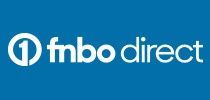
- No minimum balance requirement
- Very low minimum opening deposit requirement
Cons
- Low interest rate
Features
- APY: 0.15%
- Two million+ fee-free ATMs
FNBO Direct is the online-only division of First National Bank of Omaha or FNBO and the best free checking account on our list for cash access. This digital bank is part of a network of over two million surcharge-free ATMs. So if always being close to an ATM you won’t get charged to use is important to you, consider this checking account.
The FNBO Direct Online Checking Account requires an opening deposit of just $1 and a minimum balance of a penny to earn interest. Although this rate isn’t all that impressive, this bank doesn’t make you jump through any hoops to earn interest like receiving a certain amount in direct deposit transactions or maintaining a minimum balance. Still, look elsewhere if you’re looking for the highest rate you can possibly earn on your everyday banking.
This account also has fewer hidden fees than other free checking accounts. For example, there are no fees for incoming wire transfers and no stop payment fees. FNBO Direct uses PopMoney for peer-to-peer transfers, and these don’t cost you anything either. Just be aware that some ATMs that are in-network for FNBO Direct may charge fees themselves and you won’t be reimbursed.
Learn more or read our full review.
How to choose a checking account
With so many banks and even non-banks offering free checking accounts, scrolling through all of your options might make you a bit dizzy. Here’s how to separate the best checking accounts from the rest with key factors that affect the way you bank.
Fees
If a checking account costs you $10 a month to hold onto, you’re being charged $120 a year for nothing. There are too many free checking accounts out there to justify paying even a dollar more than you want to for your banking.
You don’t need to pay a monthly maintenance fee at all to get a great account. But monthly fees aren’t the only charges to be aware of. Other account fees can include:
- Foreign transaction fees
- Overdraft fees
- Insufficient funds fees (also called non-sufficient funds or NSF fees)
- Transfer fees
- ATM fees
- Paper statement fees
- Account closure fees
That said, many banking fees are avoidable. For instance, you can opt to receive only electronic statements to avoid small paper statement fees and activate overdraft protection services when available to protect your account from having a negative balance, which can cost between $30 and $40 each time it happens and even lead to having your account closed.
Balance and deposit requirements
Always consider minimum deposit and balance requirements before opening any type of financial account. A minimum deposit requirement is the minimum initial deposit you need to make after you open an account. If you can’t meet a minimum deposit requirement, you might not be allowed to open an account.
Some accounts will also require you to meet a certain minimum balance requirement in order to avoid a monthly maintenance fee and/or earn interest. If you know the amount of money you have in the bank is going to fluctuate significantly and dip low from time to time, try to avoid opening a checking account that requires a high minimum daily balance.
A lot of free checking accounts have no minimums, including several on this list.
Annual percentage yield (APY)
Many free checking accounts pay interest, but just as many do not.
If earning interest on your balance is important to you, start your search with high-yield checking accounts. You’ll probably need to meet certain requirements to qualify for the best rate, such as receiving $500 in monthly direct deposits or maintaining a balance of at least $100, so be sure that whatever is required makes sense for your financial strategy.
Transaction limitations
Some checking accounts may limit the number of transactions you’re allowed to make or the total amount you’re allowed to use. For example, it may restrict you to no more than ten cash withdrawals per statement period or let you deposit only up to $20,000 in a month.
These restrictions can get annoying, especially since checking accounts are supposed to be flexible. Look for options that won’t enforce transaction limits.
Mobile app or online access
While you might not consider yourself the most tech-savvy individual, you’ll certainly notice if your banking app frequently crashes or lacks the features you need to make it functional.
With any financial app, you should be able to access your bank account whenever you want, however you want. If that means from your phone, you should look for a highly-rated mobile app with lots of helpful features. If you prefer to bank online, look for a reliable platform known for always providing a smooth experience.
When it comes to banking technology, online banks often do better than traditional banks and credit unions. They tend to prioritize the digital user experience, since that’s the only experience, so you’ll have more robust tools and features that are easier to find and use. Plus, customer service is often more reachable. Some of the best checking accounts are online-only checking accounts.
ATM access
Another important “feature” of a good checking account is the accessibility of ATMs. This is another area where banks often hit unsuspecting customers hard. When you’re stuck without cash and need to take out money, you’ll do it at any ATM you can find, even if it incurs a hefty service charge. But the best free checking accounts don’t charge ATM fees and some even reimburse third-party fees each statement period. They also have ample ATMs across the country so you’re always close to one.
Even if you don’t think you’re ever going to need cash, you should know how and where you can get it if something comes up. And if you make withdrawals often, look not just for an extensive network of machines but for benefits like ATM fee rebates to help you save money
Types of checking accounts
When weighing your options, it’s important to consider the different types of checking accounts before settling on one. After all, what’s ideal for one person or situation won’t be good for someone else.
Here are a few of the most common types of checking accounts you can open including what benefits they offer and the disadvantages you’ll want to be aware of.
High-yield checking accounts
High-yield checking accounts or high-interest checking accounts are interest-bearing. This means that they earn interest on your balance so you can make a little money without lifting a finger.
While earning interest is definitely a good thing, high-yield checking accounts often come with higher minimum balance and deposit requirements than other accounts or even other actions you need to fulfill like receiving at least three direct deposits per statement cycle or making at least one electronic transfer.
High-yield checking accounts are ideal for people with larger amounts of money to put away who tend to keep a balance that would easily meet requirements and less ideal for those just looking for a free checking account they can open with any amount.
Rewards checking accounts
Rewards checking accounts earn rewards on your everyday spending and maybe a little bit of interest too, though not as much as you’d make with a high-yield checking account. Rewards may be in the form of account bonuses, cash back, or points.
These accounts may or may not come with monthly maintenance fees and often have limits on the number of rewards you can receive per month or year (e.g. a cash back cap of $50 a year).
Rewards checking accounts are best for people who know they can easily meet the requirements to earn rewards without stretching their budget and who use a variety of account features. For example, if you use your debit card for purchases, receive direct deposits, and deposit checks often, you’ll likely earn more with this type of checking account than someone who only uses their account for their paycheck.
Joint checking accounts
Joint checking accounts are shared by two or more individuals who both have some level of ownership over the account and can access its features. They can be a good option for parents with teens, married couples or those in long-term relationships, and business partners. They’re convenient for budgeting and family money management, but they may lack some of the benefits of other accounts depending on where you choose to get one.
There are many free joint checking accounts out there. Just be careful of overdraft fees with these as it can be harder to keep track of available funds when there are multiple people using and withdrawing from one account.
Business checking accounts
Business checking accounts give business owners and entrepreneurs a place to keep their earnings and money they want to set aside for business expenses. Your needs will depend on the type of business you run, the size of your company, the number of employees you oversee, and more.
For instance, a freelancer who works for themselves may be looking for flexibility more than anything and need to steer clear of high minimums. The owner of a larger business may be more interested in adding different accounts for employees and saving on their business spending.
Second-chance checking accounts
Second-chance checking accounts service a very specific purpose. They’re designed for people who have previously had their bank accounts closed because they had bounced too many checks, left too many bills unpaid, had a negative balance for too long, or something else.
You can qualify for these accounts even if your banking history isn’t spotless and this may be the best option for you if you’ve run into banking problems in the past but you want to do better.
One of the downsides of second-chance checking accounts is that they can be more restrictive than other accounts. For example, they don’t often let you enroll in overdraft protection and may charge more fees for services. It’s more difficult to find free second-chance checking accounts, but they are out there.
Read more: Best checking accounts for bad credit
How to open a free checking account
To open any bank account, you need to verify your identity and provide some personal and financial information. Most applications require you to answer questions about the following:
- Age
- Marital status
- Employment status and income
- Citizenship status
Checking account applications do not use credit checks to determine your eligibility for your account but will look at your banking history. Almost anyone can open a checking account, as long as they have not had significant issues with banking in the past. For example, your application may be declined if you’ve had a checking account closed due to an excessive number of overdrafts.
After you’re approved, you’ll need to meet the opening deposit requirements for your account. Some banks require you to meet this minimum immediately after opening, but most give you a set period of time to fund your account such as two weeks or 30 days. To stay on the safe side, avoid opening an account until you already have money ready to deposit.
When your account is set up and ready to go, you can link it with other accounts and financial tools you use such as savings accounts and budgeting apps. We always recommend automating your bill payments and savings deposits so you never forget about them or get charged late fees.
FAQs
Can free checking accounts still have fees?
When a bank or credit union offers a free checking account, this doesn’t mean the account will have no fees whatsoever. The term “free checking account” refers more to monthly maintenance fees and service fees and not necessarily to usage fees for things like overdrafts and transfers or penalty fees for things like insufficient funds. Even if a bank claims to charge no “hidden” fees, there are still ways to get charged that you might not know about.
Unfortunately, there are very few truly free checking accounts, but there are many that can be free if you’re careful about how you use them. For example, to never pay overdraft fees, enable overdraft protection and check your account balance regularly.
How can you avoid checking account fees?
The first step in avoiding fees with your checking account is to familiarize yourself with the terms of your account. Know what charges you can incur so you can understand what you need to do to avoid them.
For instance, if your account charges foreign transaction fees, you can get out of paying these by using a no-foreign-transaction-fee credit card when traveling instead of your debit card. This is a safer option anyway.
Summary
Your checking account plays an important role in your finances, and you don’t need to pay monthly fees to get what you’re looking for in a bank account. The best free checking accounts charge no monthly maintenance fees and offer benefits to help you save money and simplify your banking.
Benefits can include anything from cash back and rewards to ATM fee reimbursements and an exceptional mobile app. The best part is, you get to decide what you’re looking for and go for it.


